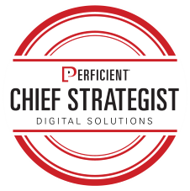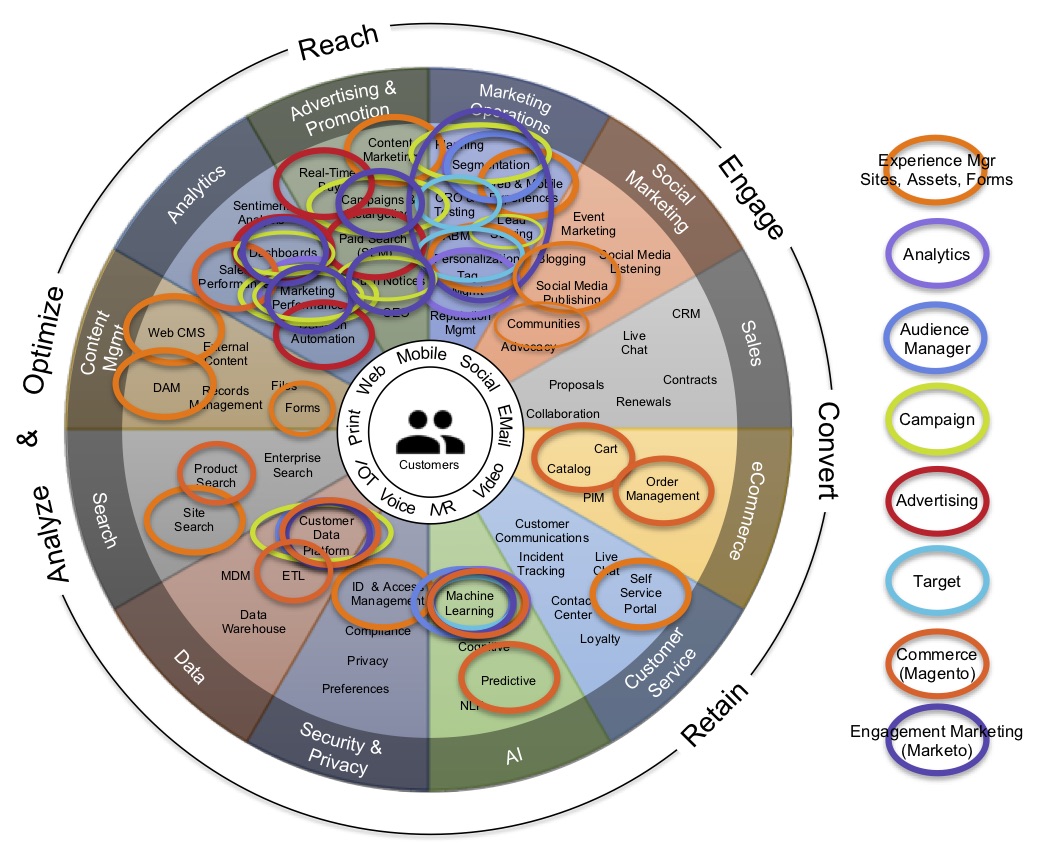In less than a week, Adobe will hold its annual Adobe Summit – Digital Experience Conference in Las Vegas where more than 15,000 people are expected to attend and learn about Adobe Experience Cloud. We often hear people at our clients say, “we are buying Adobe”, without really specifying what Adobe product they are purchasing. Has Adobe become one of those ‘single name’ or mononymous people, like Bono, Cher, Madonna, or Aristotle?
In fact, though, Adobe is a large software company with lots of different products that target many different users in the creative, marketing, and commerce worlds. Adobe also has invested a lot of time and money into creating cloud-based platforms, like Creative Cloud and Experience Cloud. If you are one of the people going to Summit 2019, you will undoubtedly learn a lot about Adobe products.
But, if you don’t attend Summit 2019, we wanted to talk about Experience Cloud, in particular, and show how its products support Customer Experiences. We recently published our Customer Experience Capabilities Model where we show the capabilities needed by companies to deliver great customer experiences. We’ll use that same model to show where each of the Adobe Experience Cloud products fit.
What is Adobe Experience Cloud?
Adobe describes the Experience Cloud as “the only end-to-end customer experience management (CXM) solution for marketing, advertising, analytics, and commerce across industries.” That’s a bold statement!
Experience Cloud does indeed deliver CXM solutions across industries. Experience Cloud is a suite of Adobe software products, but also offers the products independently of each other. When somebody says they are going to “buy Adobe”, they could be purchasing an individual product or the entire Experience Cloud.
In part 2 of this post, we are going to highlight the individual products and show what capabilities they provide within our CX Capabilities Model. Since Adobe has so many products, that post is pretty long. So for those people that don’t want to wade through all of the individual products, below we show the entire Experience Cloud relative to our CX Capabilities model.
What are Adobe Experience Cloud Capabilities?
In the following diagram, we’ve circled the capabilities available in Experience Cloud through the individual products available in the platform. The colors of the circles relate back to each individual product. You may notice that some products overlap with other products. In some cases, this is because a single product might be targeting one aspect of the market (B2C vs B2B, for example). In other cases, the overlap exists because each individual product must provide enough capabilities to support itself. So often times an individual product includes analytics or machine learning capabilities of its own.
An “End-to-End CXM Solution”?
Is Adobe Experience Cloud really an end-to-end CXM solution? By overlaying the Experience Cloud products onto our CX Capabilities Model, it’s pretty clear that Adobe is providing a very wide range of capabilities. Certainly, in the marketing, commerce and advertising spaces they provide a lot of the capabilities we identify.
Recently, Adobe acquired Magento, which provides much of the commerce capabilities circled in our model. Since this is a fairly new acquisition, we don’t expect that these commerce capabilities will be fully baked into the Experience Cloud quite yet. But clearly, Adobe has focused on filling out their offerings across more of the customer lifecycle.
If you accept our model, you see that Sales and Customer Service are two areas that Adobe does not cover well with Experience Cloud. Except for a self-service portal, right now you have to bring in other vendor systems to provide these capabilities. We think these two internal areas are critical to the entire customer experience. Adobe has a partnership with Microsoft Dynamics to exchange data, so at least Adobe recognizes the Sales aspect of customer experience.
As we said in our introduction to the CX Capabilities model, there is not one vendor that provides all the capabilities we show in the model. Adobe is not an exception either. However, we have to give Adobe high marks for building out the wide array of capabilities they offer in Experience Cloud.
As mentioned, in Part 2 of this series, we will break down Experience Cloud into the individual products and show how each aligns with our model. Stay tuned!


